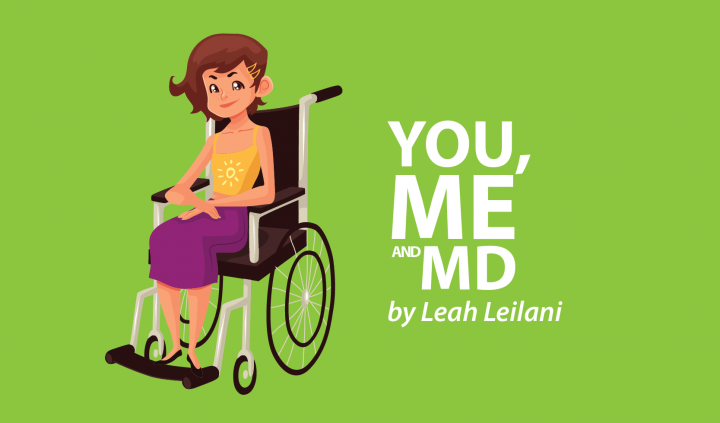Choosing the Right Dog Breed for My MD Lifestyle

Prior to my diagnosis, my family spent much more time traveling than we do now. Even though I’ve never traveled outside California, I still have memories of long, scenic car rides across the state to our vacation destination. I miss those winter days spent in a snow-covered cabin in the mountains and the hot summer day fishing in a stream during our stay at June Lake.
After I received my diagnosis of mitochondrial myopathy, my family and I knew that traveling would be harder than before. Although our vacationing days had come to an end, we had reached the opportune moment to get a dog.
Searching for the perfect breed for our new lifestyle was a daunting task. We were basically looking for a needle in a haystack. I had already been using a wheelchair for a year and a half, so my life didn’t involve much activity. What I needed was a companion, one that would be mellow enough to keep me company when I was sick, but would still run alongside my wheelchair. Bigger dogs usually need more exercise. A smaller dog would be able to keep pace or sit on my lap as I drove around in my wheelchair.
Fortunately, we had the unsolicited help of my uncle, who owns prize-winning show dogs. He and my aunt are also doctors, and are familiar with the implications of living with muscular dystrophy. Coincidentally, their niece on my aunt’s side of the family also has a type of neuromuscular disease called spinal muscular atrophy (SMA). At the time, she owned a kind of dog called a Havanese.
The Havanese breed is the national dog of Cuba, and is named for the capital, Havana. They are small but sturdy dogs, belonging to the Bichon family. Havanese were refined in Cuba, possibly by cross-breeding with poodles. They have a silky coat that hardly sheds and produces little dander. This makes them hypoallergenic — perfect for allergy sufferers like me.
Breeds like German shepherds and Labrador retrievers are overly inbred, so they have many health complications. The Havanese breed, however, has not been inbred, and therefore is not prone to severe medical issues. This was a big factor for my family, since having to pay for a dog’s medical bills on top of mine would get expensive.
The limited energy my cells produce makes it difficult to stay awake all day long, so naps are necessary. Because of this, a noisy, barking dog like a Chihuahua or Yorkshire terrier wouldn’t be ideal for me. Havanese are not known as barkers, which is another reason we chose this breed.
Finding the right breed for you may be difficult at first, but I assure you that it is worth the effort. The American Kennel Club website has information about the different breeds and their many attributes that can help you decide.
There’s nothing quite like having a fluffy companion by your side to make life a bit brighter. Although it is entirely possible to live a happy life with a disability, why not have a little help from a dog?
***
Note: Muscular Dystrophy News is strictly a news and information website about the disease. It does not provide medical advice, diagnosis or treatment. This content is not intended to be a substitute for professional medical advice, diagnosis, or treatment. Always seek the advice of your physician or another qualified health provider with any questions you may have regarding a medical condition. Never disregard professional medical advice or delay in seeking it because of something you have read on this website. The opinions expressed in this column are not those of Muscular Dystrophy News or its parent company, Bionews Services, and are intended to spark discussion about issues pertaining to muscular dystrophy.







Teresa Barhite
Also a good thing to remember is adopt a fur baby from a local shelter. There are hundreds of available dog's. Many of the dogs are trained. I got my dog Rito from a shelter and she is trained to walk loose leashed and follows directions go left, right, stop, wait, slow down etc. She is a special companion for me.
Leah Leilani
I’m so glad you found a loyal companion. I’m sure she’s thankful that she has a forever home with you.
Debra
I agree! When I rescued a black pup out of the middle of the highway in traffic, I really wasn't looking for a dog, but she found me. The vet says she is a cross between a black lab, greyhound, and a little pit bull. Living with FSHD has enough of it's challenges and adding a overactive lab pup was overwhelming at first as we learned together and trained each other!! She has actually turned out to be a real blessing in companionship, and is a wonderful guard dog. She keeps me laughing everyday which is very good medicine. So I praise God for encouraging me to turn around and go back and pick her up. I named her Lucky and I am not sure who is luckier, her or me! Thanks for sharing!
Leah Leilani
I agree, dogs are truly the best medicine. They’re our buddies and the ones that love us and are by our sides no matter what.
It can be difficult bringing a dog whos personality you don’t know into your home but you stuck through it with her. She sounds like an awesome dog.
Ralph Yaniz
I’m Cuban but didn’t know the Havanese were bred there. They look like great dogs!
Leah Leilani
They truly are. They’re not a well known breed but are definitely a hidden gem.
Christine Lynch
Dogs are the best!
Aubree Foster
Hello dear, first of all, dogs are very faithful and loyal. I saw some of the dog breeds but I like Boston Terrier puppy. This puppy is friendly and faithful. I have one Boston Terrier puppy and he already trained to every work. I spend my free time with my puppy. Thanks to the Boston Terrier Puppy store for the lovely puppy.
Leah Leilani
I’m happy to hear that you have a furry friend that you love.